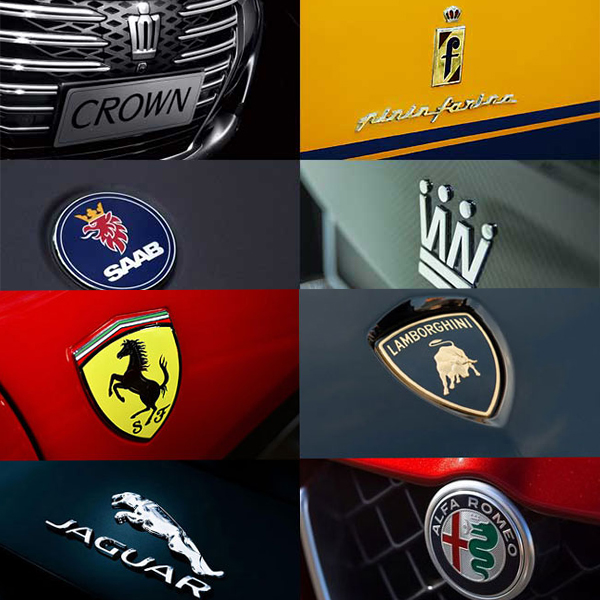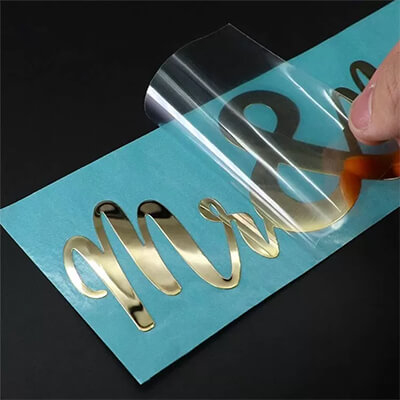Himgo delivers high-quality, cost-effective metal nameplates for you.
When it comes to vehicle branding, choosing the right type of emblem can make a lasting impression. Whether you’re a car manufacturer, aftermarket parts supplier, or product designer, the emblem you choose reflects your brand’s identity and quality standards.
The two most common materials used for auto emblems are metal and plastic — but which one is right for your brand? In this guide, we’ll compare metal vs. plastic auto emblems across critical factors such as durability, appearance, cost, and brand perception to help you make the right decision.

1. Durability and Lifespan
🔩 Metal Emblems:
Made from materials like aluminum, stainless steel, or zinc alloy
Resistant to wear, heat, UV exposure, and corrosion
Maintain structural integrity over many years
🧩 Plastic Emblems:
Typically made from ABS or acrylic
Lighter weight, but prone to cracking or fading over time
Less ideal for extreme outdoor conditions
Verdict:
If your product or brand values longevity and resilience, metal is the superior choice.
➡️ Explore our Metal Auto Emblems for high-end durability.
2. Aesthetic and Brand Image
🌟 Metal Emblems:
High-end, premium appearance
Customizable finishes: brushed, polished, chrome-plated, anodized
Often associated with luxury, performance, and professionalism
🧼 Plastic Emblems:
Can be molded into complex shapes
Limited finish options (e.g. chrome-like or matte coating)
Perceived as lower-cost or entry-level
Verdict:
Metal emblems create a stronger visual and emotional impact, especially for premium brands.
➡️ See our wide selection of Custom Metal Car Emblems that align with your brand identity.
3. Customization Options
Both materials offer design flexibility, but with key differences:
Metal:
Ideal for embossed, debossed, etched, or engraved logos
Supports layered, 3D designs with sharp details
Variety of mounting methods: adhesive, screw, or magnet
Plastic:
Easier for mass-molded shapes or vibrant colors
May require additional coating or painting for finish
Verdict:
For precision detail and elegant finishes, metal gives you more sophisticated options.
➡️ Learn about our manufacturing capabilities to support custom designs.
4. Cost and Budget Considerations
Metal:
Higher material and production costs
Longer tooling setup for custom dies
Longer lifespan reduces replacement needs
Plastic:
Lower cost per unit (especially in high volumes)
Faster production lead time for simple designs
May incur future costs due to fading or wear
Verdict:
If your brand targets value over time and reduced long-term maintenance, metal is the smarter investment. But for short-term campaigns or limited budgets, plastic may suffice.
➡️ Compare options with our Pricing & Services overview.
5. Environmental Impact and Sustainability
Metal:
Recyclable and sustainable
Less chemical degradation over time
Often produced using cleaner anodizing and plating processes
Plastic:
Contributes to long-term environmental waste
Harder to recycle, especially coated plastics
Verdict:
Metal emblems offer a more environmentally conscious choice for brands prioritizing sustainability.
Conclusion: Which Should You Choose?
| Feature | Metal Emblems 🏆 | Plastic Emblems |
|---|---|---|
| Durability | ✅ Excellent | ❌ Moderate |
| Aesthetic Appeal | ✅ Premium Look | ❌ Basic |
| Customization Detail | ✅ High Precision | ❌ Limited Finish Options |
| Cost Efficiency | ❌ Higher Initial Cost | ✅ Lower Cost |
| Environmental Impact | ✅ Recyclable | ❌ Non-sustainable |
Choosing between metal and plastic emblems depends on your brand goals, budget, and product lifecycle.
If you’re looking to build a premium, long-lasting impression, a custom metal auto emblem is the clear winner. It aligns with brand strength, durability, and prestige — all essential qualities for automotive branding.
➡️ Ready to elevate your brand? Request a Sample or Get a Quote from Himgo, your trusted metal emblem manufacturer.




